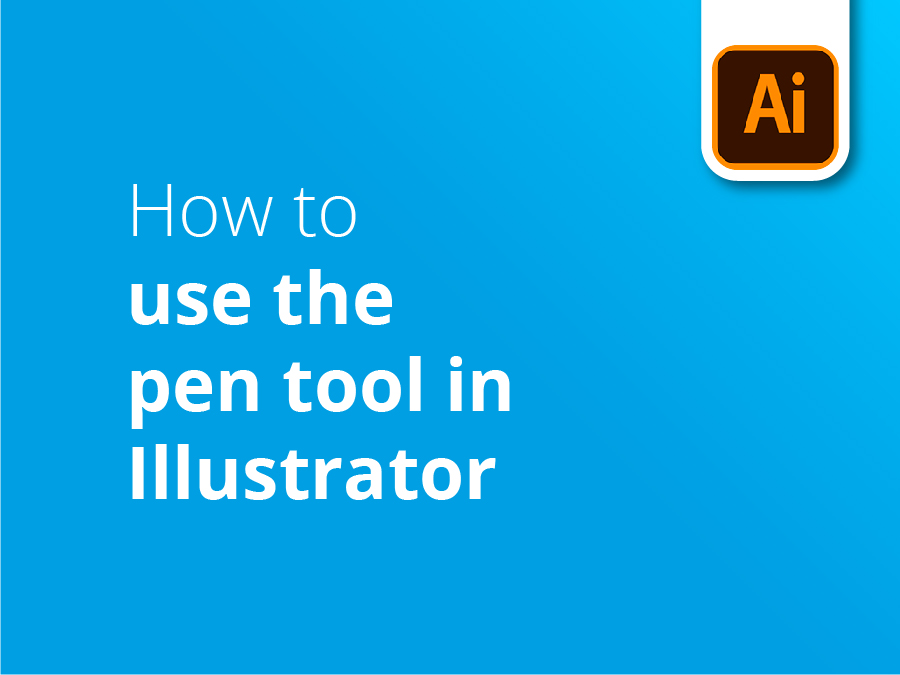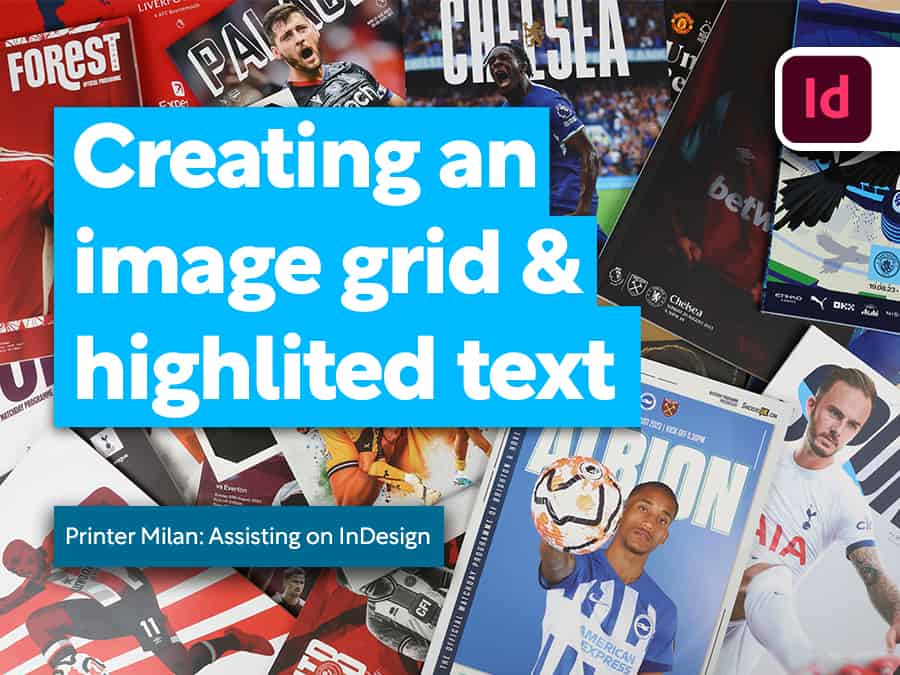Adobe Illustrator is the world’s favourite tool for creating vector graphics, logos and illustrations. The pen tool is one of the programme’s most fundamental and versatile features.
Our video tutorial peeks behind the basic functions to reveal the unexpected ways the Pen Tool can help you achieve precise lines and shapes. Even seasoned illustrators may find there are more shortcuts to learn and hacks to master…
Straight to the point
We start by linking anchors points together to create basic polygonal shapes. Each point can be moved and manipulated using the pen tool, either one at a time or in groups.
Ahead of the curve
The video goes on to explain how the pen tool can be used to create curved lines and shapes. You’ll learn to customise your curves in no time, as we show you how to adjust your anchors, angle your handles and twang your rubber bands.
If that all sounds a bit baffling, don’t worry! All those twists and turns get straightened out in our informative video. There’s even a tasty treat at the end…
Video tutorial: How use the Pen Tool in Illustrator
If you liked this tutorial there’s a whole series to explore when you subscribe to our YouTube Channel here:
If your illustration turns out to be print-worthy, Solopress offers great prices and free UK delivery.
Video Transcription
How to use the Pen Tool in Illustrator
Hi, welcome to another Solopress tutorial.
For this one, we’re going to look at how to use the pen tool in Illustrator. I’m in Illustrator now, I’ve got a blank canvas set up. I’m just going to work off a single layer for now, and I’ve got a black stroke.
Creating shapes with anchors
So if I select the pen tool and if I start clicking away, you can see that for every single click I’m making here, I’m creating one of these new blue anchor points, and then it completes my pen line between each anchor point. And until I click down again to create an anchor point, I’ve got this guide here, this blue line to show me where the line will go. You can turn it off in preferences if you want, it’s called the “rubber band”, but I recommend just leaving that on, it’s really useful.
When I want to complete this shape, if I go to the original anchor point, you’ll see the cursor has a circle underneath it. That indicates that it wants to complete the shape. And from this point you can change the feel, take the stroke away if you like. I just want to show you actually.
Editing your anchors
You can see here that my guide colour is blue, so if I’m working with a blue graphic as well, the guide doesn’t show up well at all. So, if I double click on my dead space in my layer here, you can change the guide colour. So you can come down and pick something contrasting and there you can see that line is much, much clearer to see what you’re working with.
Right, so if I want to take away any of these anchor points, if I hover the cursor over the existing anchor point, you’ll see the cursor will change to a minus, and if you click, it will take it away. And then if you want to add any anchor points, if you go over the line, you’ll see you get a plus symbol, and you can add anchor points.
Moving one or more anchors
Now to move any of these anchor points, I’d really recommend using the shortcut for this. If you, I’m on a Mac, so I’m going to use Command. And if I press down Command, you’ll see that my cursor changes to the Selection tool. If you’re on a PC, I believe it’s Control to press. So with Command pressed down, I’m going to just click on one of the anchor points and if I hold down on the mouse, I can move the anchor point wherever I want it to be, and then release. And again, just click, hold, move it and release.
You can select a couple of anchor points or as many anchor points as you want, or all at the same time. Again, with my finger down on Command, and I can draw a selection box to select as many of these anchor points as I want. And then if I hold down on the mouse, I can move, as many as I want, all at the same time.
Creating curves
Okay, that’s the very basics of the pen tool. Now let’s have a look at creating some curves.
I’ve got this image here that I want to trace to make a nice cleaner version of this kind of low res doughnut image. I’ve put the doughnut on a layer by itself and locked it, just so we can’t disturb it. And then I’ve just got a new layer and just called that pen for now.
So again, with the pen selected, I’m just going to show you over here, how curves work. If I click an anchor point and then when I make my next anchor point, I’m going to hold down the mouse and drag it out, and you’ll see that the rubber band changes to a curve, and also I’ve got two handles now, coming out of my anchor point. You can see my rubber band now is going to show me how my next curve’s going to look.
You’ve always got to anticipate how this handle on your anchor point’s going to affect the next curve that you’re making. Again, I’m going to drag out, and you’ll see that this handle here is affecting how my next curve’s going to look. That’s just something that comes with experience. You’re going to learn how to foresee that curve.
Controlling your curves
If I keep clicking and holding and dragging out, I’m going to create a nice kind of sinuous curvy shape like this. Now I can go back and have control over these curves. So again, if I hold Command on my Mac, or Control if you’re on PC, and just click, select one of these anchor points, you’ll see that it shows me the handles that are related to that anchor point, but also any handles that are related to this curve that I’m going to effect.
So now again, still with my finger on the Command key, I can move the handle here, and you can see how that affects the curve. Also, you’ll see that it’s moving both handles in unison, but I can adjust the length of this handle here, and all that means is, I’m having full control over this part of the curve but it’s maintaining that nice curve coming out either side of that anchor point.
Again, I can grab that side and do the same. If I want to move the handles independently, I move my finger across to the Option key on a Mac, or if you’re on a PC, use the Alt key. You can see that I can grab that handle and move that independently, and you’ll get less of a smooth curve between each anchor point as a result.
If you want to go to a curve and reset it, if you’re not happy with the curve you’ve got in the first place, hold down the Option key, or Alt on a PC and click on the actual anchor point, click once and you’ll see it resets. And then if I drag out from there, it will give me my handlebars back. Again, just keeping my finger on the Option key, finger down on the mouse, and I can adjust that again and then control it how I wish.
Tracing an object
Okay, I’m going to run through very quickly just how to trace an object like this as a demonstration with a few more tips, but if you’re heading off now, don’t forget you could subscribe to our channel. And also, if you’ve got any comments or any questions, please let me know below and I’ll get back to you.
I’m going to show you this, really just to show the pen tool in practice. For an illustration like this, I’m looking at doing it in three layers. So, I do the dough first, then the dark icing and then the pink. So if I name this first layer.
Okay, I’ve got my pen tool and I’m going to start clicking around this edge, so you can just drag out these handles from the start, and you’ll get an idea of how far you can go between them anchor points to get a good curve for the shape you’re doing.
Organising your layers
Because I know this shape’s going to be hiding behind this dark icing, I’m just going to close this path like this. And if I get the colour picker, I can just pick a colour for the dough. There you go, so we’ve got that first shape. Pen tool again, just round this curve here. Probably do this in three anchor points, and there we go. That’s our first layer done and that’s our dough.
And then a new layer for the dark icing. Okay, I’m going to hide the dough, and what I’ll do, I’ll just, I’ll speed up through this and then I’ll stop it. I just want to explain about cutting out this hole afterwards. All right, I’ll see you in a bit.
Okay, so there we go. We’ve got an outer line and an inner line for this icing. If I, I’m just going onto my Selection tool and I’m going to create a feel for this icing. We want a dark brown, there you go. And to delete, subtract this shape on the inside, if I hold Shift and select that shape as well, and then if I go to Window, Pathfinder, and I want this one here, it’s the Minus Front tool. So if I just click that, it’s going to cut that shape out, okay? So close that, and we can see we’ve got our dough and our dark icing.
Completing the illustration
I’m going to cut straight to the end now, show you the pink icing, and another kind of little star we can put on it. So there you go, I’ve got all the layers in now, and I’ve hidden my original layer, so you can see the illustration. There’s one or two points we can just tweak, and if you wanted to, you could go on and add some shine and shadow, but we’ll leave that for another tutorial.
Anyway, I hope that’s helped and we’ll see you again soon.




